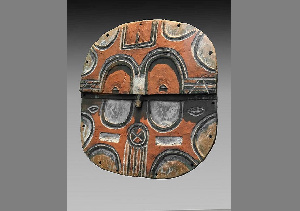How the Teke people of the Republic of Congo became best known for their fetishes

The Teke people of the Republic of Congo were forced to cohabitate with the French in the 1800s. They returned to their own way of life after independence in the 1960s. Teke which means ‘to buy’ in the Bateke language indicates the main occupation of the people — merchant traders in maize, millet, and tobacco. They are however good hunters and skilled fishermen as well.
They are the oldest Bantu tribe from the Republic of Congo originally made up of different people from Gabon, The Democratic Republic of Congo, and the Republic of Congo. They are a part of the Kidumu tribe that has very strong spiritual values like many tribes in Congo.
They believe in a supreme being, Nzambi, who they say is the creator of the universe. To receive favors from Nzambi, tutelary spirits are consulted.
The family wields a lot of power in the social unit of every home indicating that the head of the Teke is one of the most important people in society.
The Teke have one family head who decides the fate of his people when they go against the laws. He is their tribal chief or mfumu mpugu who also answers to a hereditary land chief, Mfumu na tzee, and has the power of life and death over everyone in the family.
These tribal chiefs also double as religious leaders and if any family member wants to communicate with the spirits, the mfumu mpugu does so on their behalf using potions and bones.
The tribal chiefs during the slave trade had the power to domestically own slaves of their own and control the lives of others in their family.
The Teke are hailed for their Teke masks. These masks are usually round flat and shaped like a disk; they help to identify social structures of a family or tribe. The wooden masks have abstract patterns and geometric motifs with distinctive horizontal lines painted in earthly colors.
These masks are worn usually by members of the Kiduma — a secret society — during traditional dancing ceremonies like initiation rites for men into adulthood, weddings, and funerals. They all have triangular-shaped noses and a small slit at the eyes to conceal the wearer and a woven raffia dress, with dress and fibers added to the masks.
CLICK HERE TO DOWNLOAD PRESS RADIO MOBILE APP

Teke artists carved figures largely surrounded by fetish material, known as Bilongo. These figures protect and assist the Teke, according to a report. The report adds that “if a fetish figure successfully demonstrates its power, its owner may detach its Bilongo, break it into several pieces and insert fragments into other figures. He will then sell the new figures to neighboring families, leaving the original statue with an emaciated body.”
Source: face2faceafrica.com






